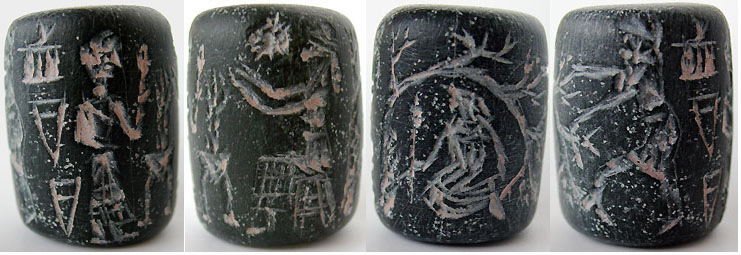It looks like you're using an Ad Blocker.
Please white-list or disable AboveTopSecret.com in your ad-blocking tool.
Thank you.
Some features of ATS will be disabled while you continue to use an ad-blocker.
27
share:
I want to demonstrate here the evidence for a lost astrological sign associated with a great flood, how that was represented and conceptualized within
a greater mythological narrative and how it must originally source from a culture that was considerably older than the Egyptian and Mesopotamian, that
the era it relates to was the zodiac Age of Cancer circa 8600 BC and ended in ca. 6450 BC.
There is a singular piece of evidence that enables me to develop this hypothesis, an Indus valley seal that appears to show in sequence from left to right the constellations Virgo-Leo-Cancer-Gemini, were i would suggest the figure in the tree represented the constellation Cancer, somewhat surprisingly.

It's clear in Indus valley seals that the constellations are used to represent mythological narrative, this transpires of course over the agricultural year as well as having potential association with greater ages, and the constellation Leo represented here by a Tiger marked the high point of the Mid-summer heat and dry season, the natural progression sees the breaking down of this and inundation.
 I can source another representation of what i would consider a Female figure in
the tree, again in the branches above the tiger and in association with the numeric sign for the Pleiades of seven, which she was certainly the
Goddess of, also seen is the water-bearer constellation Aquarius which marked the commencement of the year and the tiger the mid-point.
I can source another representation of what i would consider a Female figure in
the tree, again in the branches above the tiger and in association with the numeric sign for the Pleiades of seven, which she was certainly the
Goddess of, also seen is the water-bearer constellation Aquarius which marked the commencement of the year and the tiger the mid-point.
The three dots probably the numeric sign of her brother the Sun.
To understand exactly what she is doing in that tree and what she is offering one needs to look to Egyptian religion and the cult of Hathor and tomb representations of her offering sustenance to the deceased in the tomb as i outlined here in The Egyptian Tree of Life
 Astonishingly then one needs to consider Egyptian iconography to find best
realization of what she represented, that at the point of death within the annual cycle she offered sustenance and support, that this carried through
into the afterlife cult.
Astonishingly then one needs to consider Egyptian iconography to find best
realization of what she represented, that at the point of death within the annual cycle she offered sustenance and support, that this carried through
into the afterlife cult.
The Egyptian New year occurred at the summer solstice whern the Sun was passing from Leo into Cancer.
Of course the age of Cancer relates to when this had been occurring at the Equinox not the summer solstice.
The question arises then as to how the Goddess in the tree asscoaite with Cancer in the astrological year came to be represented by a Crab or in the case of Egypt the scarub beetle, the association with death and the rising of flood waters is certainly there in Mesopotamian lore;
In imagining then the two rivers as the claws of the Crab and identifying those as Cancer the earlier tradition of the constellation being the Goddess within the tree appears to have been lost, but there were still key myths relating to Inanna which recorded the earlier tradition even though without reference to the Indus valley seal it has been impossible to properly contextualize these, but what was understood as happening to the tree is that it is uprooted and torn apart in the associated flooding, which leads on to the next sign Gemini.
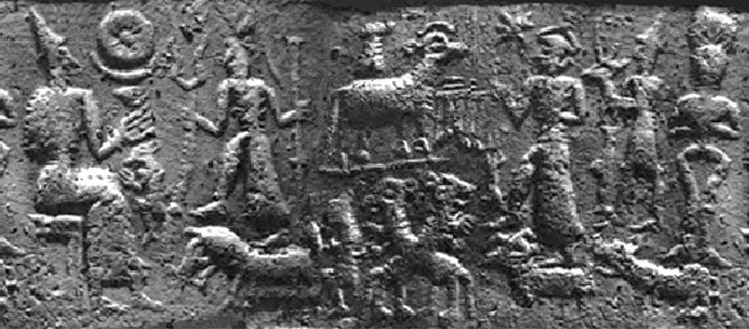
There is no doubt then that the tree was understood as uprooted in the flooding, but that it is restored and then divived to form the cultic basis for the association of Inanna with the iconography of Gemini, which is two halves of the tree forming a portal, in the Indus valley seal below one sees a sequence Pisces-Airies-Taurus-Gemini, the divided tree which is the portal of the West into the Underworld.

While the earliest tradition of Gemini was based upon the division of the tree that had formerly been Cancer and was understood as uprooted in flooding, this developed into the tradition of two guardians of the entrance into the underworld or two heroes such as in the Gilgamish epic, were he had torn apart the Huluppu tree of Inanna, and also of course the tradition of Inanna entering into the Underworld through that portal to confront death.
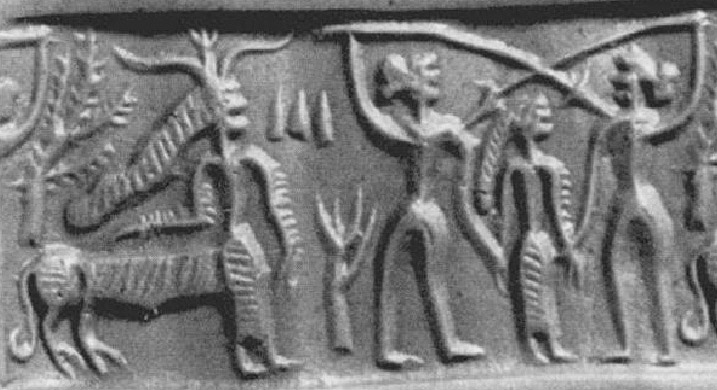
It's the case with the Sumerians then that either they had forgotten and were confused with regards to their own mythology or they enjoyed being cryptic and vague because there is nothing directly suggesting they realized the basis of the Huluppu tree myth lay in Cancer, nothing as explicit as the Indus valley seal, the Egyptian iconography of Hathor in the tree is also devoid of greater context.
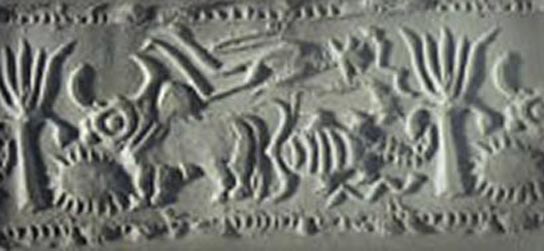
What was involved then with using the divided fragments of the tree to create a portal into the Underworld was to facilitate the potential for rebirth through the crossing of what was known as the river of ordeal, the Milky way, to emerge at the opposite point to Gemini in Scorpio;
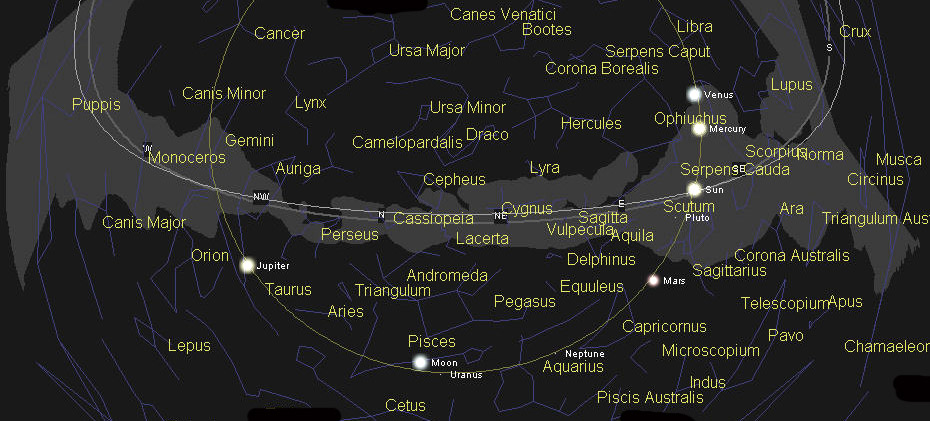
There were two aspects to the tradition, the tearing apart and overcoming nature in terms of the tree in the West and correspondingly in the East it is as if physical reality has been torn apart, were the scorpions in association with the birth Goddess rather resemble the leaves and branches of the tree of the West.
 The Indus valley seals again demonstrate the best understanding of these
formulations and it has to be considered they were closer to the common source, despite leaving no written information there symbolism has the greater
clarity.
The Indus valley seals again demonstrate the best understanding of these
formulations and it has to be considered they were closer to the common source, despite leaving no written information there symbolism has the greater
clarity.
In conclusion then it can be seen that the Goddess in the tree is very much a lost sign of Astrology despite having had the pivotal role in the cyclic return from death to new life in terms of the agricultural year and greater mysteries.
There is a singular piece of evidence that enables me to develop this hypothesis, an Indus valley seal that appears to show in sequence from left to right the constellations Virgo-Leo-Cancer-Gemini, were i would suggest the figure in the tree represented the constellation Cancer, somewhat surprisingly.

It's clear in Indus valley seals that the constellations are used to represent mythological narrative, this transpires of course over the agricultural year as well as having potential association with greater ages, and the constellation Leo represented here by a Tiger marked the high point of the Mid-summer heat and dry season, the natural progression sees the breaking down of this and inundation.
 I can source another representation of what i would consider a Female figure in
the tree, again in the branches above the tiger and in association with the numeric sign for the Pleiades of seven, which she was certainly the
Goddess of, also seen is the water-bearer constellation Aquarius which marked the commencement of the year and the tiger the mid-point.
I can source another representation of what i would consider a Female figure in
the tree, again in the branches above the tiger and in association with the numeric sign for the Pleiades of seven, which she was certainly the
Goddess of, also seen is the water-bearer constellation Aquarius which marked the commencement of the year and the tiger the mid-point. The three dots probably the numeric sign of her brother the Sun.
To understand exactly what she is doing in that tree and what she is offering one needs to look to Egyptian religion and the cult of Hathor and tomb representations of her offering sustenance to the deceased in the tomb as i outlined here in The Egyptian Tree of Life
 Astonishingly then one needs to consider Egyptian iconography to find best
realization of what she represented, that at the point of death within the annual cycle she offered sustenance and support, that this carried through
into the afterlife cult.
Astonishingly then one needs to consider Egyptian iconography to find best
realization of what she represented, that at the point of death within the annual cycle she offered sustenance and support, that this carried through
into the afterlife cult. The Egyptian New year occurred at the summer solstice whern the Sun was passing from Leo into Cancer.
Of course the age of Cancer relates to when this had been occurring at the Equinox not the summer solstice.
The question arises then as to how the Goddess in the tree asscoaite with Cancer in the astrological year came to be represented by a Crab or in the case of Egypt the scarub beetle, the association with death and the rising of flood waters is certainly there in Mesopotamian lore;
As a creature of the waters, the Crab is used in astrological omens to predict the coming floods. The fundamentals of the scheme are expressed in binary form:
‘If the stars of the Crab scintillate: high floods will come’.
‘If the stars of the Crab are faint: high floods will not come’.
This basic scheme is developed further in the Great Star List where the front stars of the Crab specifically represent the waters of the Tigris, and its rear stars are used to foretell the water levels of the Euphrates.
The association of the Crab with rivers is so strong that the following omen is understood to refer to the Crab even though it isn’t explicitly mentioned: ‘If the moon is surrounded by a river there will be great floods and cloudbursts’ – the Crab stands in the halo of the moon.
Babylonian Cancer
In imagining then the two rivers as the claws of the Crab and identifying those as Cancer the earlier tradition of the constellation being the Goddess within the tree appears to have been lost, but there were still key myths relating to Inanna which recorded the earlier tradition even though without reference to the Indus valley seal it has been impossible to properly contextualize these, but what was understood as happening to the tree is that it is uprooted and torn apart in the associated flooding, which leads on to the next sign Gemini.

Once upon a time, a tree, a huluppu, a tree --It had been planted on the bank of the Euphrates, It was watered by the Euphrates --
The violence of the South Wind plucked up its roots ,tore away its crown, the Euphrates carried it off on its waters.
The woman, roving about in fear at the word of An, roving about in fear at the word of Enlil, took the tree in her hand, brought it to Uruk: "I shall bring it to pure Inanna's fruitful garden
The woman tended the tree with her hand, placed it by her foot, Inanna tended the tree with her hand, placed it by her foot,
Inanna and the Huluppu tree
There is no doubt then that the tree was understood as uprooted in the flooding, but that it is restored and then divived to form the cultic basis for the association of Inanna with the iconography of Gemini, which is two halves of the tree forming a portal, in the Indus valley seal below one sees a sequence Pisces-Airies-Taurus-Gemini, the divided tree which is the portal of the West into the Underworld.

While the earliest tradition of Gemini was based upon the division of the tree that had formerly been Cancer and was understood as uprooted in flooding, this developed into the tradition of two guardians of the entrance into the underworld or two heroes such as in the Gilgamish epic, were he had torn apart the Huluppu tree of Inanna, and also of course the tradition of Inanna entering into the Underworld through that portal to confront death.

It's the case with the Sumerians then that either they had forgotten and were confused with regards to their own mythology or they enjoyed being cryptic and vague because there is nothing directly suggesting they realized the basis of the Huluppu tree myth lay in Cancer, nothing as explicit as the Indus valley seal, the Egyptian iconography of Hathor in the tree is also devoid of greater context.

What was involved then with using the divided fragments of the tree to create a portal into the Underworld was to facilitate the potential for rebirth through the crossing of what was known as the river of ordeal, the Milky way, to emerge at the opposite point to Gemini in Scorpio;

There were two aspects to the tradition, the tearing apart and overcoming nature in terms of the tree in the West and correspondingly in the East it is as if physical reality has been torn apart, were the scorpions in association with the birth Goddess rather resemble the leaves and branches of the tree of the West.
 The Indus valley seals again demonstrate the best understanding of these
formulations and it has to be considered they were closer to the common source, despite leaving no written information there symbolism has the greater
clarity.
The Indus valley seals again demonstrate the best understanding of these
formulations and it has to be considered they were closer to the common source, despite leaving no written information there symbolism has the greater
clarity. In conclusion then it can be seen that the Goddess in the tree is very much a lost sign of Astrology despite having had the pivotal role in the cyclic return from death to new life in terms of the agricultural year and greater mysteries.
Of course it has also been deeply considered what actually ended or died following the zodiac age of Leo in the subsequent great flood, the
explanation that there was once a mighty civilization such as Atlantis that was washed away in it's prime being an attempted explanation for what was
involved, this is to conform to the essential symbolism of the great year.
There isn't really any evidence that such a civilization existed during that period, instead what the evidence does indicate is that it was hunting itself as a way of life that ended with the onset of the Neolithic revolution, so if Leo is taken as the personification of the great hunter perhaps it can be understood why he looks with some trepidation toward the Goddess in the tree.
Perhaps she herself can be taken as the gathering counterpart to the hunting culture, that way of life in some sense is also coming to an end, being swept away, though it is going to be transformed into agricultural resource management through controlled management of the inundation in terms of irrigation, and so she represents the way forward...so no lost civilization just a lost tiger.
The Goddess of sexuality and reproduction that takes charge at the sign of Cancer is prominent throughout the subsequent signs of Gemini and Taurus, her primary symbolism being the Pleiades, this has passed by the time of the great sage of the age of Aires.
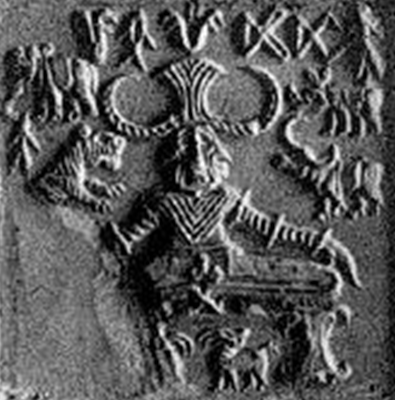
There isn't really any evidence that such a civilization existed during that period, instead what the evidence does indicate is that it was hunting itself as a way of life that ended with the onset of the Neolithic revolution, so if Leo is taken as the personification of the great hunter perhaps it can be understood why he looks with some trepidation toward the Goddess in the tree.
Perhaps she herself can be taken as the gathering counterpart to the hunting culture, that way of life in some sense is also coming to an end, being swept away, though it is going to be transformed into agricultural resource management through controlled management of the inundation in terms of irrigation, and so she represents the way forward...so no lost civilization just a lost tiger.
The Goddess of sexuality and reproduction that takes charge at the sign of Cancer is prominent throughout the subsequent signs of Gemini and Taurus, her primary symbolism being the Pleiades, this has passed by the time of the great sage of the age of Aires.

edit on Kam22846vAmerica/ChicagoMonday1628 by Kantzveldt because: (no reason given)
edit on
Kam22846vAmerica/ChicagoMonday1628 by Kantzveldt because: (no reason given)
The symbolism of the tree splitting in two is very interesting, along with the portal theory and a cosmic world tree of which the branches would be
the constellations the "lost" astrological sign is not lost, just hidden.
Could the goddess be that which is between the constellations/heavens and the earth? Similar to the egyptian waters of nu? With the tree being our constellation system as a whole.
The tree split equally, (between the constellations) draws a straight line between the equinoxes marking day and night or the balance/tipping points of the yearly cycle.
Important ritual dates?
Could the goddess be that which is between the constellations/heavens and the earth? Similar to the egyptian waters of nu? With the tree being our constellation system as a whole.
The tree split equally, (between the constellations) draws a straight line between the equinoxes marking day and night or the balance/tipping points of the yearly cycle.
Important ritual dates?
a reply to: Wifibrains
 I think the twinning process was understood as the basis for physical rebirth,
that the future self will be reborn as an exact copy of the former, the role of the Goddess in these concerns is to ensure that happens through
reproduction, there is also the diametric opposition of the point of entry into the underworld at Gemini and the point of emergence at Scorpio, which
also indicates there's a sting in the tail involved in all of this.
I think the twinning process was understood as the basis for physical rebirth,
that the future self will be reborn as an exact copy of the former, the role of the Goddess in these concerns is to ensure that happens through
reproduction, there is also the diametric opposition of the point of entry into the underworld at Gemini and the point of emergence at Scorpio, which
also indicates there's a sting in the tail involved in all of this.
As i mentioned the Sumerian myths of the Huluppu tree seem to give the best indication of what was involved to some extent, but i think they had earlier origin as in themselves there are contradictory versions and a general dislocation with regards to the greater context, for example Enki sailing off into the underworld as in this version is difficult to relate to other known traditions of Enki
The Goddess considered to be contained within the trunk of the tree in Sumerian tradition was Lilith, associated with the sexual imagination and death, it's she that uproots the tree in this version rather than Gilgamish in others and the only suggested reason for the whole mythos is to make a chair and bed for Inanna!
The Celestial configuration as i illustrated is concerned with the intersection of the Galactic Plane and ecliptic plane relative to the local horizon at points of Gemini and Scorpio, it is the Milky way that joins them and that was the pathway or river of the Underworld, the Heavens divided in two with a mystical crossing point to the other side, that can be significant at either the solstice points or equinox, except of course that for zodiac ages that relates to the equinox point.
 I think the twinning process was understood as the basis for physical rebirth,
that the future self will be reborn as an exact copy of the former, the role of the Goddess in these concerns is to ensure that happens through
reproduction, there is also the diametric opposition of the point of entry into the underworld at Gemini and the point of emergence at Scorpio, which
also indicates there's a sting in the tail involved in all of this.
I think the twinning process was understood as the basis for physical rebirth,
that the future self will be reborn as an exact copy of the former, the role of the Goddess in these concerns is to ensure that happens through
reproduction, there is also the diametric opposition of the point of entry into the underworld at Gemini and the point of emergence at Scorpio, which
also indicates there's a sting in the tail involved in all of this. As i mentioned the Sumerian myths of the Huluppu tree seem to give the best indication of what was involved to some extent, but i think they had earlier origin as in themselves there are contradictory versions and a general dislocation with regards to the greater context, for example Enki sailing off into the underworld as in this version is difficult to relate to other known traditions of Enki
At that time, it was planted, a tree, a single tree, by the banks of the Great River,
Enki, the Father, did plant the Huluppu-tree,
The God of Wisdom, he planted it by the banks of the Euphrates,
Before he set sail, before the Father departed for the underworld.
The tree was nurtured by the waters of the Euphrates
the very waters that carried Enki to the sea
Small windstones were tossed against him;
Large hailstones were hurled up against him;
Like onrushing turtles,
They charged the keel of Enki's boat.
The whirling South Wind arose and blew upon the tree,
Pulling at its roots and ripping at its branches,
Until the waters of the Euphrates carried it away.
The Goddess considered to be contained within the trunk of the tree in Sumerian tradition was Lilith, associated with the sexual imagination and death, it's she that uproots the tree in this version rather than Gilgamish in others and the only suggested reason for the whole mythos is to make a chair and bed for Inanna!
And Lilith smashed her home and bore the tree into the city,
Into the sacred city of Uruk, she carried it.
From the trunk of the tree the sons of Uruk carved a shining throne for Inanna,
From the trunk of the tree, the daughters of Uruk carved a luscious bed for Her;
From the roots of the tree Inanna fashioned a pukka for her brother,
From the crown of the tree she fashioned a mikku for Enki, the Wise Father;
And Ninshubur, was her faithful companion, closer than a sister.
The Celestial configuration as i illustrated is concerned with the intersection of the Galactic Plane and ecliptic plane relative to the local horizon at points of Gemini and Scorpio, it is the Milky way that joins them and that was the pathway or river of the Underworld, the Heavens divided in two with a mystical crossing point to the other side, that can be significant at either the solstice points or equinox, except of course that for zodiac ages that relates to the equinox point.
edit on Kpm22846vAmerica/ChicagoMonday1628 by Kantzveldt because: (no reason given)
a reply to: Kantzveldt
This is exactly what happens in symbolic ritual. You don't die in the ritual, and you are not (re)born, you pass through a point between old and new, you are the beginning and end, the alpha and omega, all in mind the paradoxes that repel imagination actually unite. New beginnings come and it was a spiritual religious way to synch with nature and the universe as a civilisation.
I wonder if there is also significance then to the point of diametric opposition to orion? If the way out is straight opposite?
Is this the wheel of reincarnation/samsara for civilisations past? Each one a great year?
The twinning process was understood as the basis for physical rebirth, that the future self will be reborn as an exact copy of the former
This is exactly what happens in symbolic ritual. You don't die in the ritual, and you are not (re)born, you pass through a point between old and new, you are the beginning and end, the alpha and omega, all in mind the paradoxes that repel imagination actually unite. New beginnings come and it was a spiritual religious way to synch with nature and the universe as a civilisation.
there is also the diametric opposition of the point of entry into the underworld at Gemini and the point of emergence at Scorpio
I wonder if there is also significance then to the point of diametric opposition to orion? If the way out is straight opposite?
Is this the wheel of reincarnation/samsara for civilisations past? Each one a great year?
edit on 16-2-2015 by Wifibrains because: (no reason given)
a reply to: Wifibrains
Yes i'm sure that the cult of Kali owes a lot to these earlier considerations, the association of the sexual imagination with Death and tree nymphs and such forth, Orion is somewhat peripheral to the Gemini loci but in the version of the Huluppu myth i linked to Ninshubur as Orion is acting as facilitator, engaging the eye of power i looked at here
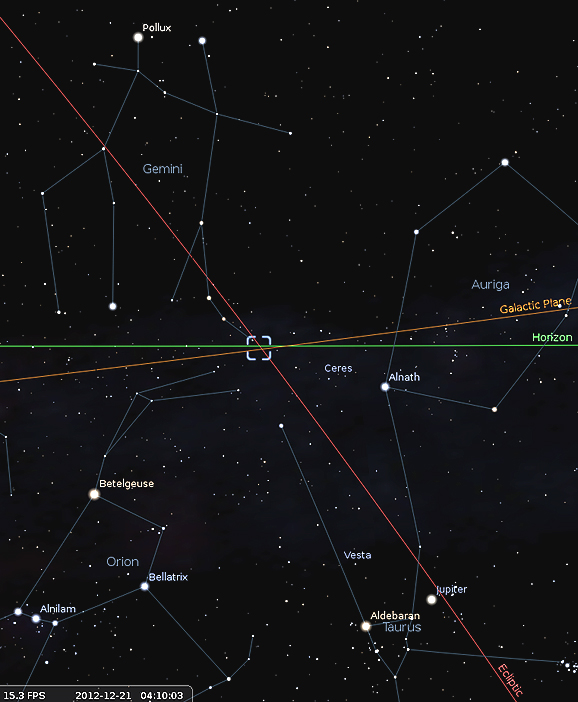
The birth Goddess seen in association with Scorpio is the frog type Goddess having association with magical transformation, things will never be quite as they seem there, as i mentioned the sting in the tail.
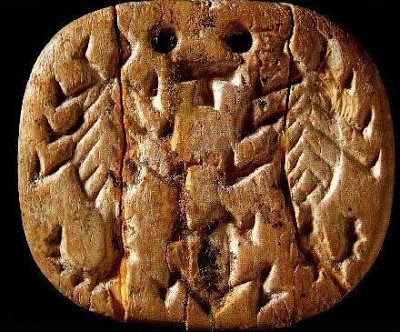
And of course because magic is considered to be involved then also secrecy.
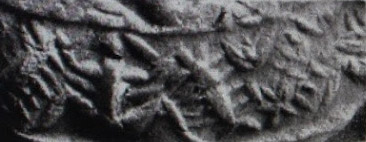
Yes i'm sure that the cult of Kali owes a lot to these earlier considerations, the association of the sexual imagination with Death and tree nymphs and such forth, Orion is somewhat peripheral to the Gemini loci but in the version of the Huluppu myth i linked to Ninshubur as Orion is acting as facilitator, engaging the eye of power i looked at here

The birth Goddess seen in association with Scorpio is the frog type Goddess having association with magical transformation, things will never be quite as they seem there, as i mentioned the sting in the tail.

And of course because magic is considered to be involved then also secrecy.

a reply to: Kantzveldt
I can definitely see a parallel in this uprooting...
From the website...
www.inannareturns.com...
Lol
I can definitely see a parallel in this uprooting...
In the beginning verses of Book XV, Krishna teaches his friend Arjuna the understanding of the Tree of the Universe or the Tree of Samsara. Samsara is this relative universe with its endless cycles of births and deaths.
This Tree of the Universe (Samsara) is said to be noisy ‘constantly reverberating with the tumultuous sounds that arise from the cacophony of all human activity. Its trunk is formed by ‘the various subtle bodies of living beings.'
When Souls are weary of enjoying the experiences provided by transmigration through a myriad of births and deaths, they must learn to discern the Real from the effects of guna-maya and cut down this Tree.
Krishna’s Asvattha Tree, the Tree of the Universe or Samsara, is none other than the World Tree, the Axis Mundi known in every metaphysical understanding through the ages around the planet. The brilliant metaphysical writer Rene Guenon says that Krishna’s upside-down Ashvattha tree refers to the primordial traditions symbolized by the sacred oak for the Celts, the lime tree for Germans, and the ash for Scandinavians (Man & His Becoming According to Vedanta).
Abhinavagupta states that it is the ‘deep-grown roots’ of the Tree of Samsara that must be cut, the roots which have been produced by ‘both good and bad action’ by limited human consciousness.
From the website...
www.inannareturns.com...
Lol
edit on 17-2-2015 by Wifibrains because: (no reason given)
a reply to: Wifibrains
That's true, parallels to Gilgamesh and Enkidu defeating Humbaba the master of illusion and the spiritual guardian of the sacred cedar forest, just to be on the safe side they chopped the whole forest down!
That's true, parallels to Gilgamesh and Enkidu defeating Humbaba the master of illusion and the spiritual guardian of the sacred cedar forest, just to be on the safe side they chopped the whole forest down!
Gilgamesh listened to the word of his companion, he took the axe in his hand, he drew the sword from his belt, and
he struck Humbaba with a thrust of the sword to the neck, and Enkidu his comrade struck the second blow. At the third
blow Humbaba fell.
Then there followed confusion for this was the guardian of the forest whom they had felled to the ground. For as far as two leagues the cedars shivered when Enkidu felled the watcher of the forest, he at whose voice Hermon and Lebanon used to tremble. Now the mountains were moved and all the hills, for the guardian of the forest was killed. They attacked the cedars, the seven splendours of Humbaba were extinguished. So they pressed on into the forest bearing the sword of eight talents.
They uncovered the sacred dwellings of the Anunnaki and while Gilgamesh felled the first of the trees of the forest Enkidu cleared their roots as far as the banks of Euphrates. They set Humbaba before the gods, before Enlil; they kissed the ground and dropped the shroud and set the head before him. When he saw the head of Humbaba, Enlil raged at them. ‘Why did you do this thing?
edit on Kpm22847vAmerica/ChicagoTuesday1728 by Kantzveldt because: (no reason given)
a reply to: Kantzveldt
And in the bible...
All symbolic of "a out with the old in with the new" scenario, rebirth/resurrection etc, and play out on many levels from unlearning to relearning to the rise and fall of civilisations.
This is a very long read. I have only skimmed it, but the connections here are ten to the dozen.
www.dralimelbey.com...
And in the bible...
And the light of Israel shall be for a fire, and his Holy One for a flame: and it shall burn and devour his thorns and his briers in one day;
And shall consume the glory of his forest, and of his fruitful field, both soul and body: and they shall be as when a standardbearer fainteth.
And the rest of the trees of his forest shall be few, that a child may write them.
All symbolic of "a out with the old in with the new" scenario, rebirth/resurrection etc, and play out on many levels from unlearning to relearning to the rise and fall of civilisations.
This is a very long read. I have only skimmed it, but the connections here are ten to the dozen.
www.dralimelbey.com...
new topics
-
Democrats send letter to Biden urging him to ratify Equal Rights Amendment
US Political Madness: 4 hours ago
top topics
-
Reprehensible Behavior
US Political Madness: 16 hours ago, 11 flags -
This is adorable you guys!
General Chit Chat: 15 hours ago, 9 flags -
Defending the need for adherence to Old Testament commandments under the new covenant of Christ
Conspiracies in Religions: 17 hours ago, 5 flags -
Democrats send letter to Biden urging him to ratify Equal Rights Amendment
US Political Madness: 4 hours ago, 2 flags
active topics
-
Only two Navy destroyers currently operational as fleet size hits record low
Military Projects • 24 • : Freeborn -
Defending the need for adherence to Old Testament commandments under the new covenant of Christ
Conspiracies in Religions • 27 • : FlyersFan -
Those Fake Death Numbers From Hamas Out Of Gaza
Middle East Issues • 193 • : FlyersFan -
Rant. I am sick of people saying the police are revenue raising.
Rant • 13 • : PorkChop96 -
Light from Space Might Be Travelling Instantaneously
Space Exploration • 28 • : Lazy88 -
More Bad News for Labour and Rachel Reeves Stole Christmas from Working Families
Regional Politics • 9 • : covent -
Democrats send letter to Biden urging him to ratify Equal Rights Amendment
US Political Madness • 2 • : VariedcodeSole -
Post A Funny (T&C Friendly) Pic Part IV: The LOL awakens!
General Chit Chat • 7914 • : Cymru -
George Stephanopoulos and ABC agree to pay $15 million to settle Trump defamation suit
Mainstream News • 25 • : Echo007 -
-@TH3WH17ERABB17- -Q- ---TIME TO SHOW THE WORLD--- -Part- --44--
Dissecting Disinformation • 3713 • : 777Vader
27

